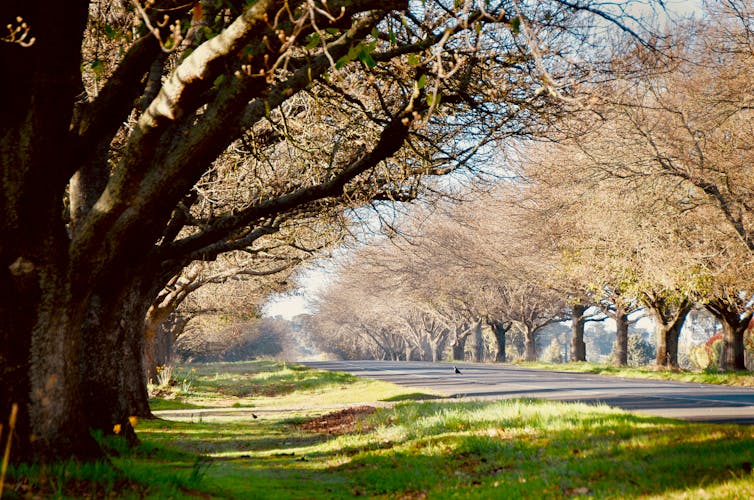 Supplied
Supplied
On Anzac Day each year, Australians remember those who served and died in wars and conflicts. We may attend a dawn service, go to a march or lay a wreath at a war memorial. But across Australia lie living war commemorations you may pass every day, without realising their significance.
Dating back more than a century, Avenues of Honour exist to remind us of the sacrifice and suffering of our servicemen and women. They might comprise sentinel trees lining one or both sides of a street, or a path through a park. These trees might also form a grove, or consist of a magnificent lone specimen.
The earliest recorded Avenues of Honour were created in response to colonial Australia’s participation in the Boer War, but most were established during and after World War I. In some cases, each tree was planted in memory of a specific fallen soldier - a tangible way for grieving loved ones to remember their dead.
Sadly over time, some memorial trees have died or been uprooted. Others have survived but are neglected. The race is on to ensure the remaining trees are documented, preserved and restored.
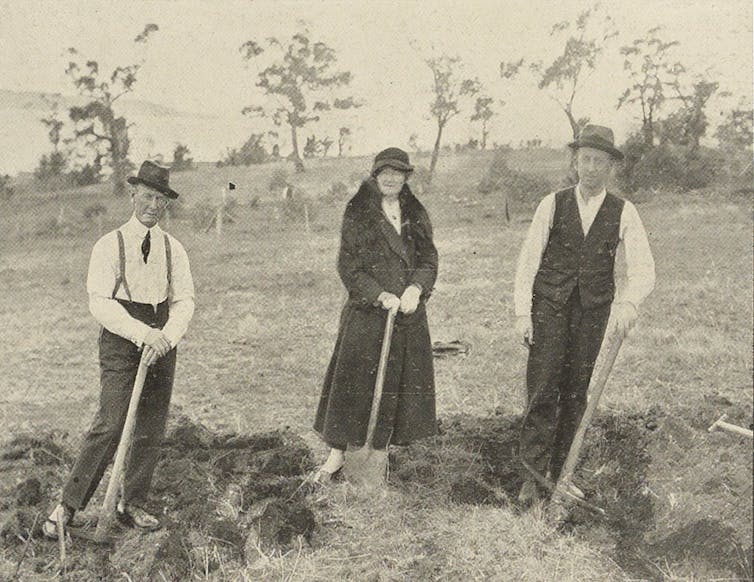 A working bee at the Soldiers Memorial Avenue in Hobart, dated June 27, 1918. Friends of the Soldiers Memorial Avenue
A working bee at the Soldiers Memorial Avenue in Hobart, dated June 27, 1918. Friends of the Soldiers Memorial Avenue
They shall not grow old
Avenues of Honour became common in Australia during and after World War I. At one point, 325 existed in Victoria alone.
More than 60,000 Australians were killed in World War I and the Australian government did not repatriate their bodies. So a tree in an Avenue of Honour, close to the family home, became an important physical memorial. It also respected the wishes of returned servicemen who wanted a fitting tribute to all those who died and served in the war.
The plantings were often organised by women or close family members of a dead soldier.
Some avenues consisted of native species such as eucalypts and kurrajongs – in fact, some represent the first major use of native vegetation in civic landscapes. Some avenues were planted with conifers such as pines and cypresses, walnut trees, mangoes and even palms. Many consisted of exotic deciduous species such as elms and oaks.
For example, in 1918 an Avenue of Honour was planted at Woodend, in Victoria’s Macedon Ranges. According to the National Trust it initially consisted of 162 English and Algerian oak trees planted each side of the Calder Highway.
The trees were dedicated to individuals, 38 of whom were killed in war. Attached to each tree was a plaque bearing the names of those remembered. But many of these plaques were lost or damaged over time.
Read more: Crowds at dawn services have plummeted in recent years. It's time to reinvent Anzac Day
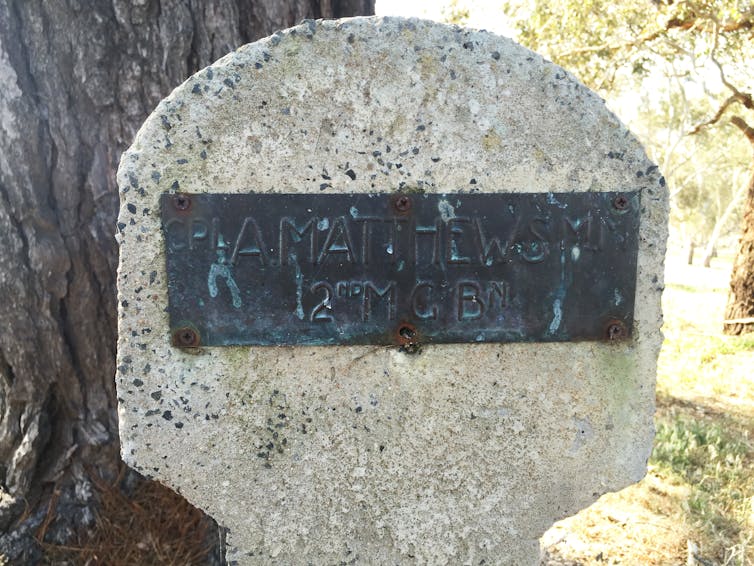 In many cases, trees were planted to honour each fallen soldier, who was identified with a plaque. Glenn Williams/Avenues of Honour
In many cases, trees were planted to honour each fallen soldier, who was identified with a plaque. Glenn Williams/Avenues of Honour
Age has wearied them
As the years wore on, many Avenues of Honour aged and declined or disappeared completely. Some lost so many trees they were no longer avenues.
An Avenue of Honour planted in 1917 at the Melbourne beachside suburb of Sandringham once consisted of 171 red flowering gums. Each represented a lost soldier or nurse. But by 2013, just 32 trees remained.
In 2000, fewer than 200 Avenues of Honour were recorded across Australia – most in Victoria. However, data were scarce and many more unrecorded and forgotten avenues were thought to exist. Work began around this time to uncover them.
In 2004, non-profit organisation TREENET launched its Avenues of Honours program. It aimed to honour, with a tree, the memory of every Australian who had died in war. Original avenues would be documented, preserved and reinstated. Where necessary, new avenues would be established.
By late 2006, 567 avenues had been identified – three times more than originally known. They were estimated to contain more than 100,000 trees, however many were depleted or in poor condition. It was also clear other avenues remained elusive.
By now, the centenary of World War I was approaching, and work to revive Avenues of Honour picked up.
The Soldiers Memorial Avenue in Hobart was restored. In Willunga, South Australia, a consortium of industry and community groups established a new avenue consisting of 100 Algerian oaks.
But the future of other avenues is not assured. Ballarat, for example, is home to Australia’s longest Avenue of Honour. It runs for 22km and comprises 3,771 trees, each bearing a plaque dedicated to men and women who served in World War I. But the avenue is under constant threat from roadworks.
Read more: Telling the forgotten stories of Indigenous servicemen in the first world war
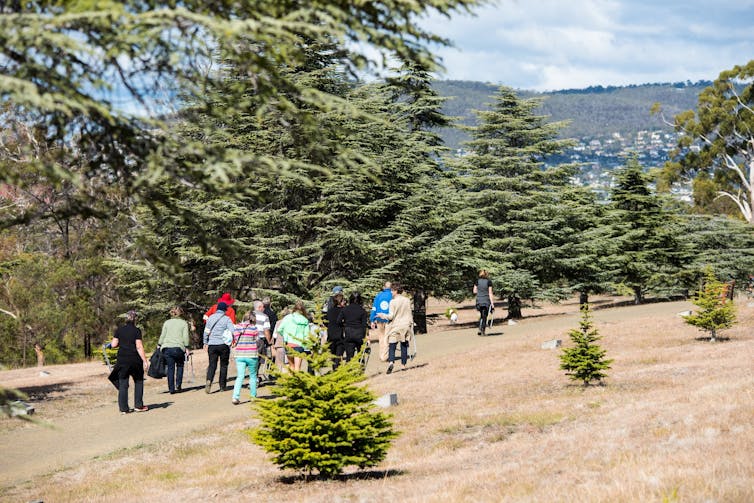 Hobart’s Soldiers Memorial Avenue has been restored. Friends of the Soldiers Memorial Avenue
Hobart’s Soldiers Memorial Avenue has been restored. Friends of the Soldiers Memorial Avenue
We will remember them
Over the years, efforts to identify and restore Avenues of Honour have struggled to attract government funding. But this has not deterred many dedicated local custodians, community groups, RSL members, historians and others from continuing the work.
Some avenues have been restored or are now better managed. And the Avenues of Honour project is now in its 17th year, made possible by private donations.
As of 2020, the project had identified 605 Avenues of Honour, spread across most states and territories as follows:
- ACT: 3
- NSW: 77
- QLD: 57
- SA: 54
- TAS: 70
- VIC: 317
- WA: 27
Despite all the good work, there has been no large-scale replacement of lost trees and avenues. Nor is there a national strategy to manage and replace these iconic elements of the Australian urban and rural landscape.
For many avenues, nature will take its course as the trees age. Soon, there will inevitably be fewer trees left. But this Anzac Day provides a chance to consider how to preserve the trees that remain, and restore those lost.
Do you know of an Avenue of Honour in your area? If so, please take a photo and send it, along with a description, to [email protected]. Or click here to find your local Avenue of Honour, identify a new one, provide information about an existing avenue or donate to the preservation effort.
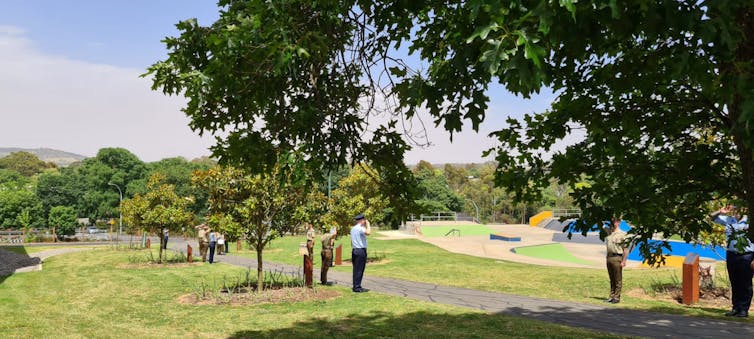 An Avenue of Honour at Mount Barker in South Australia. Such avenues should be protected before it’s too late. Glenn Williams/Avenues of Honour
An Avenue of Honour at Mount Barker in South Australia. Such avenues should be protected before it’s too late. Glenn Williams/Avenues of Honour
Gregory Moore, Doctor of Botany, The University of Melbourne
This article is republished from The Conversation under a Creative Commons license. Read the original article.

